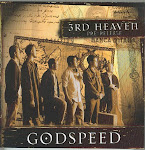
Most children's authors are not famous. I'll say it again; most children's authors are NOT famous. For every well-known children's book author, I'm guessing there are probably a thousand wonderful authors who will never make those big bucks or see a media frenzy with each new book release.
If you are an aspiring children's writer, or even a published one, does that information bother you? Come on. Be honest. Does it bother you even a teeny, tiny bit? It's OK if it does. After all, what children's writer wouldn't want to have beautiful books published that are loved by children around the world, and make tons of $$$$$ doing it? There's nothing wrong with that, but money should never be the motive for a children's author. If it is, I believe that author will lose his or her focus. What's our focus? Reaching children.
Those persistent, marvelously talented, yet unknown authors do have books published---books that often go out of print after the first print run, never to be seen in a bookstore again. "So why try?" you ask. "What's the point if my book is a flash in the pan?" For what it's worth, here's my answer---
Never forget that the end of a print run
doesn't mean the end of the story.
Those books can live on in the hearts and minds
of the children who cherish them.
Those are the children who may grow up to be avid readers. The internet, computer and video games have snatched books from the hands of kids. Perhaps your book will be one to help pull them into the love of reading.
Treasured books have sticky jelly fingerprints on the covers, and crayon marks on some of the pages. They're worn and torn, and the edges are frayed. Kids don't care who wrote their favorite book, they just know they love it. You don't have to be famous for them. I consider those authors (of which I believe I am one) to be fortunate. Not famous, but fortunate. Their words touch the lives of the audience they love. Isn't that the reason we write?
Some of our books will be handed down to children and grandchildren. They'll bring back sweet memories of childhood. Think back to just one of your favorite childhood books. How did it make you feel when you read it or when it was read to you? When you grew up did you pull it from a dusty cardboard box in the garage and gasp when you saw it? "Oh! I LOVED this book when I was little!" Has that ever happened to you? It's happened to me and I feel like that little girl again when I turn the pages.
I like what author Catherine Woolley (Jane Thayer) said in her fabulous book Writing for Children:
"Most children's authors are famous to no one but librarians and teachers and the children who write to you or hear you speak. Children often know the title of a book they love but not the name of the author. You will not be famous to the general public except sometimes in your hometown. Pay it no mind. Be amused."
So, if your book didn't make you a bundle of money, but has jelly fingerprints all over it, and is pulled off the bookshelf before being tucked in at night--- consider yourself fortunate. And be amused (o;
Copyright 2008 Sheryl Ann Crawford






















